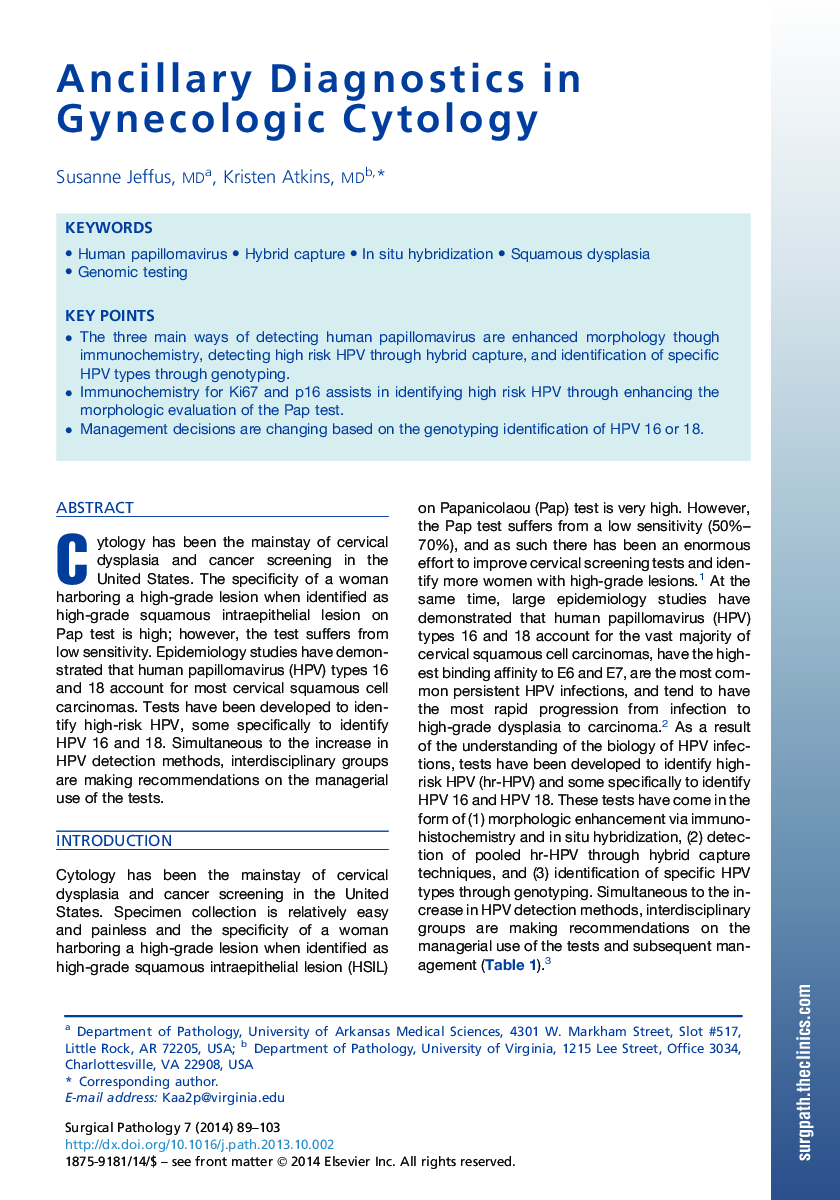| Article ID | Journal | Published Year | Pages | File Type |
|---|---|---|---|---|
| 3334570 | Surgical Pathology Clinics | 2014 | 15 Pages |
Abstract
Cytology has been the mainstay of cervical dysplasia and cancer screening in the United States. The specificity of a woman harboring a high-grade lesion when identified as high-grade squamous intraepithelial lesion on Pap test is high; however, the test suffers from low sensitivity. Epidemiology studies have demonstrated that human papillomavirus (HPV) types 16 and 18 account for most cervical squamous cell carcinomas. Tests have been developed to identify high-risk HPV, some specifically to identify HPV 16 and 18. Simultaneous to the increase in HPV detection methods, interdisciplinary groups are making recommendations on the managerial use of the tests.
Related Topics
Health Sciences
Medicine and Dentistry
Hematology
Authors
Susanne Jeffus, Kristen Atkins,
